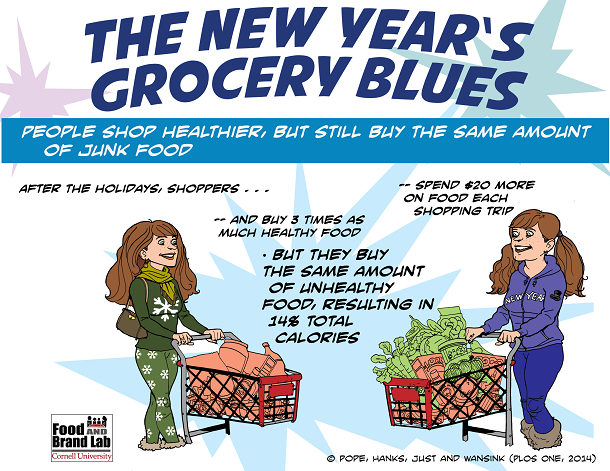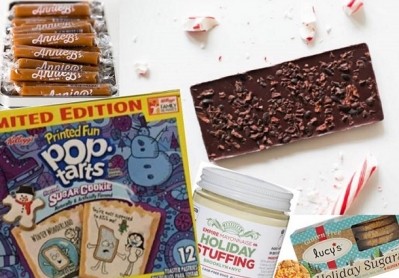Consumers continue to buy treats in the New Year despite resolutions to eat healthier

Rather, sales of unhealthy food, which increases during the holidays, likely will not return to pre-holiday levels until the spring and early summer when “people start gearing up for summer and ‘bikini season,’” according to researchers led by Lizzy Pope, a registered dietitian at the University of Vermont.
Pope, who led the study while a post-doctoral student at Cornell University, and fellow researchers found that from Thanksgiving to New Year’s Day, the 207 households they studied spent on average 15% more on food than they did from July through Thanksgiving, with the average weekly grocery bill climbing to $121.83 from $105.74. In addition, 75% of the additional expenditures covered the cost of less healthy items, as measured by Guiding Stars, an algorithm that categorizes foods and beverages on a scale of zero to three, with three starts being the most nutritious.
This increase is not surprising givin that “people’s eating environments are often altered during the holiday period as they attend more parties, eat with friends more frequently, are exposed to leftovers” and are distracted and stressed while making eating decisions, the researchers say in the study.
What did surprise researchers, however, was that households spent roughly 25.01% more on food after the New Year, when many people resolve to get in shape and eat healthier.
The authors acknowledge that many health foods are more expensive than less healthy foods, and noted that the average household spent $13.24 more on nutritious food after New Year’s Day than during the holidays. But they also found that households continued to spend the same amount extra on less healthy foods – $11.77 – as they did during the holidays compared to before the holidays.
“Even more intriguing is that contrary to well-intentioned New Year’s resolutions, additional weekly per-serving calories purchased increased to 890 in the post-holiday period relative to baseline, more than doubling the 440 calorie increase evident in the holiday season,” the authors note. This suggests “households may have been purchasing less-healthy foods with higher calorie content.”
Willful ignorance, health-halos explain continued spending
One reason for the sustained uptick in spending on groceries, and less healthy items in particular, is that “the period between Thanksgiving and Christmas may establish a new purchasing ‘status quo’ for people in terms of both money spent and calories bought,” and that people “may have trouble reverting to their early-fall, less caloric purchasing,” the researchers hypothesize.
They also suggest that the households continued to spend more on food because they “remained in a state of willful ignorance surrounding the nutrition content of their holiday purchases.”
They also might have fallen victim to an undeserving “health-halo” created by merely buying healthy foods, “which dubiously fulfilled participants’ goals to purchase healthy foods, and relieved them of any guilt associated with purchasing non-starred items,” the researchers say.
Strategies for reducing spending
To help people realistically fulfill their goals of buying and eating healthier foods in the New Year, co-author Drew Hanks of Ohio State University, suggests in a related blog post that shoppers replace unhealthy foods with more nutrient-dense and lower calorie foods rather than adding healthy foods to their carts in addition to the less healthy foods.
The researchers also suggest “visual cues that divide shopping carts and baskets in half [to] encourage the consumer to fill half the cart with high-nutrient items may be the one way to increase consumption of healthier foods.”
Pre-determined shopping lists also could help shoppers rein in spending and stick to buying healthier foods.
















